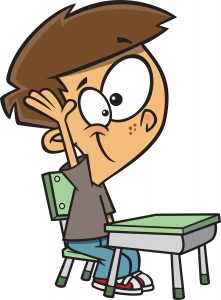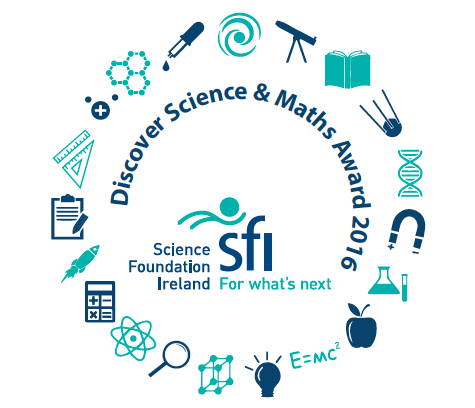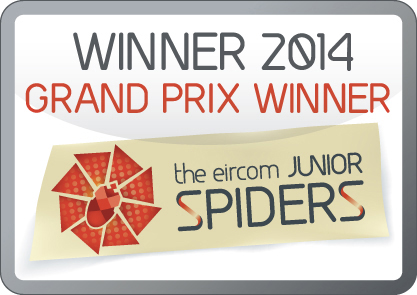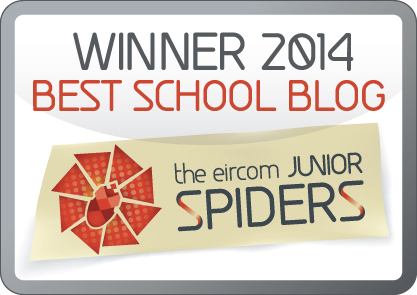Welcome to our submission for the Discover Primary Science and Maths award for 2020. This is our 15th year taking part in the Awards, although this school year has been a little different! Once again, we are applying for the Plaque of STEM Excellence. This award is given to schools that carry out extensive work in science, technology, engineering and maths, all of which are very important in St. Peter’s.
This is the 6th year that we have had Junior and Senior Infants taking part in the award! It is great to see the young scientists have so much fun learning about science and maths. Each year we try to put an even bigger focus on STEM across the school, with a whole school approach helping us achieve even more in this area. This has also meant, due to current circumstances, that we have broadened our scope to encourage STEM at home, which has been both challenging and exciting.
You can read all about it and see the evidence below. It has been great to see the improvements we can make towards helping our school incorporating STEM as a way of thinking, rather than as a stand-alone subject.
All of the pupils are seeing that STEM is about the skills required to learn science, technology and mathematics, and how engineering and design processes and principles are used to achieve an outcome. As students of STEM, we identify a problem. We then need to create possible solutions to the problems, which we can then go and test.
Yet again, a huge amount of work has gone into this application. Every single class in the whole school has taken part, so a big well done to all the pupils and teachers! For the eighth year in a row, we are using our blog to submit our award and to link back to our activities that have taken place during the year. Our SFI Award application code this year is 2020/DSM/987.
Step 1: Science
For this step, we carried out hands-on science investigations under the four different strands in classes throughout the school, and home. We also tried to include maths in these investigations where possible, linking in with Step 4.
- Energy and Forces: 2nd Class helped make a parachute for Santa while you can read about 5th Class learning about WWII fighter pilots here.
- Living Things: 6th Class investigated how different training techniques impacted their speed! Here, you can read all about their Science Blast Project
- Environmental Awareness and Care: 5th Class learned all about hurricances! Senior Infants have been looking at water this year, exploring porous material to help against the rain and braving the oceans, learning all about sea creatures. Classes have continued to contribute to developing our School Garden this year which is coming along nicely!
- Materials and Change: Junior Infants experimented with making Candy Canes Disappear. 3rd Class used distant learning to investigate materials they could use at home to build a bridge. View their brilliant creation here.
Step 2: Technology
The second step in the application is ensuring that technology was used by our pupils. As a previous winner of the Junior Spider Awards, technology has become a part of every-day life in St. Peter’s. We were also awarded the Digital School of Distinction award, which showcased the effort and time we put in incorporating technology into our daily school lives.
Ms. Kane and her class have been using Lego Wedo a lot this year. They have loved getting to play with the kits and programming them and engaging with the interactive lessons using the Lego Wedo software. You can read all about their engagement with designing, building and coding the Lego Wedo robots.
Learning from home has challenged us to come up with new ways of using technology to assist distant learning for our pupils. Each class has been using Study Ladder to set online science tasks for pupils and Ms. Whyte has been setting STEM challenges through our school blog.
5th class were delighted to have Sophie from Microsoft Ireland come in to visit back in February to teach them all about the importance of coding. They used these new skills to undertake Hour of Code and incorporate coding into their busy timetable.
On top of all this, throughout the other classes in the school pupils of every age have also used cameras, laptops, animoto, and this blog, as well as apps such as Class Dojo and Twitter, to showcase the work that they have been doing during the course of the year. With using technology regularly we recognise the importance of online safety and marked this when we celebrated Safer Internet Day.
As you can see from our submission this year, we have continued to implement technology in our day-to-day teaching and learning, even at home, with maths and science at the forefront of this. You can check out all of our tweets from the year @stpetersbray!
Step 3: Engineering
For the third step of our application for the DPSM Plaque of STEM Excellence, we have had a big focus on the Design and Make element of science. Our staff have worked previously in conjunction with St. Patrick’s College regarding professional development in STEM. A big part of this focused on the Design and Make process, and helped us make sure STEM was an integral part of our engineering activities. Teachers set simple STEM challenges early in the year that get children thinking, like 5th class in September creating paper chains before moving on to more complex challenges as seen above.
We also took part in Engineers Week 2019. Here you can read about 4th Class and their trip to Bray Library to meet a real engineer, learn all about engineering and try out what it means to be an engineer for themselves.
1st class tried their own engineering challenges too and constructed their own catapults which they talked about and demonstrated at our school assembly and designed their own dog kennels this year too.
Step 4: Maths
Throughout our Science investigations, all classes looked to incorporate Maths as much as possible but we also try to incorporate it into other curricular areas. For example, learning about lines and shapes in Art.
We love to bring Maths to life whenever we can and one example of this is cooking in Mr. Foley’s class. Read all about how they bring Maths to life with measuring ingredients and timing their dishes here.
Each class also had a block of STEM for Fun throughout the year. Here Science, Technology, Engineering and Maths are brought to life, in a fun way, outside of the classroom.
Maths can be active too. We loved having Mathletics 4 Schools in for the day to show us how to combine maths with physical activity. In fact, we loved it so much they even ran 2 after school clubs for us!
Integrating technology with maths is an important skill and application can be seen by 5th Class using tablets to solve maths word problems or analysing general election results General Election Results.
Step 5: STEM Showcase
As a school we know how important it is for students to present their work to an audience, especially with all the hard work put into STEM initiatives by pupils and staff. Typically, classes present their learning during Assembly or at our own showcases.
This year, however, we were particularly delighted to be featured on RTE’s Nationwide Programme on the 17th of April to discuss our history of engagement with primary science events through the RDS and showcase a couple of strategies we use to promote STEM throughout the school.
We couldn’t include all our STEM activities as our teachers and pupils work so hard throughout the year on this but we hope you enjoyed reading a few examples from our submission for the SFI Discover Primary Science and Maths Award!








7:31 pm on June 13th, 2020
Well done to everyone!
11:43 am on June 15th, 2020
Thanks Ada. Lots of great work from teachers again this year!